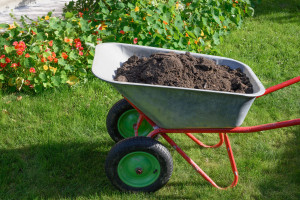 Buying a new home is an exciting milestone! It’s your chance to create a space that truly reflects your style and personality, both inside and out. While decorating the interior is often the first thing on your mind, don’t forget about your outdoor space. Your yard and garden are just as much a part of your home, and with a little planning, you can make them both beautiful and eco-friendly.
Buying a new home is an exciting milestone! It’s your chance to create a space that truly reflects your style and personality, both inside and out. While decorating the interior is often the first thing on your mind, don’t forget about your outdoor space. Your yard and garden are just as much a part of your home, and with a little planning, you can make them both beautiful and eco-friendly.
The good news? You don’t need to be an expert gardener to create a sustainable landscape. Choosing plants that naturally thrive in your climate can save you time, money, and effort while also benefiting the environment. Here are three simple ways to go green with your landscaping:
1. Choose Native Plants
Instead of selecting plants that require a lot of extra care to survive in your region, opt for ones that are already suited to your local environment. Native plants are naturally adapted to the climate, meaning they require less water and maintenance than non-native species. They also support local wildlife, including pollinators like bees and butterflies. If you’re not sure what plants are best for your area, check with a local nursery or gardening organization for recommendations.
2. Invest in Perennials
Perennials are a great addition to any garden because they come back year after year, saving you time and money compared to annuals, which need to be replanted each season. These long-lasting plants go dormant in the winter, but their roots stay alive, ready to sprout again in the spring. Whether you prefer vibrant flowers, fragrant herbs, or hardy shrubs, there are plenty of perennial options suited to different climates and soil types. Just be sure to choose varieties that match your plant hardiness zone for the best results.
3. Reduce Your Lawn Size
Lawns require a lot of upkeep—watering, mowing, fertilizing—and all of that maintenance adds up. Instead of dedicating your entire yard to grass, consider incorporating drought-tolerant plants, ornamental grasses, or ground covers that require less water. Many cities even offer incentives for replacing traditional lawns with water-efficient landscaping, also known as xeriscaping. By reducing your lawn size, you’ll not only cut back on water usage but also save yourself time and effort in lawn care.
Plan for a Sustainable Yard
A well-designed, eco-friendly yard enhances the beauty of your home while also reducing your environmental impact. Before diving into your landscaping project, take the time to research which plants and designs will work best for your space. With a little planning, you can create an outdoor oasis that’s not just visually appealing but also low-maintenance and sustainable.








